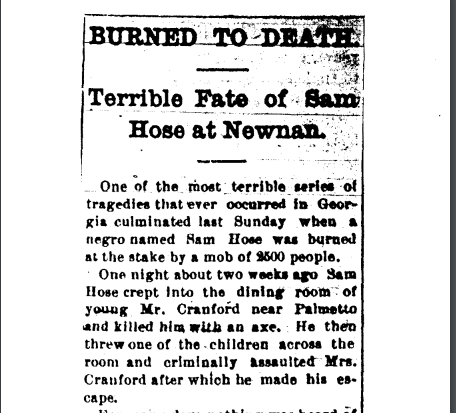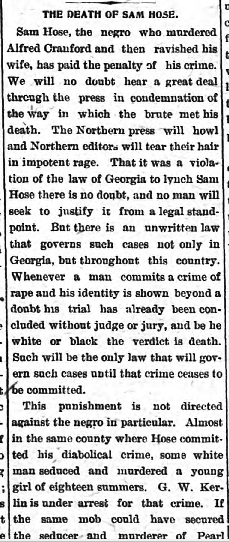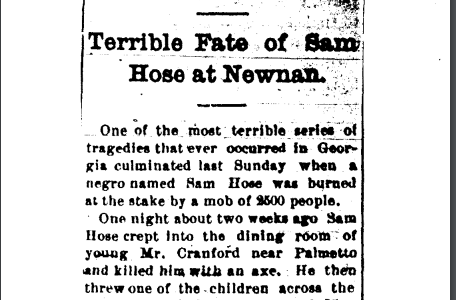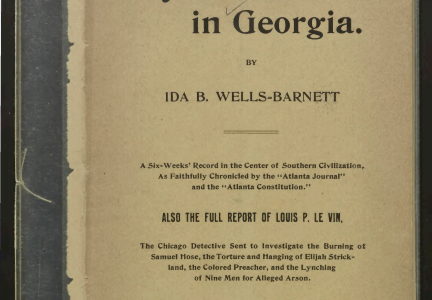Sam Hose went to jail for killing a white man and attacking his wife in front of her children in 1899 when a white mob took him from his sell to a new location to torture him to death. This mob mutilated Hose’s body while he was tied up, eventually burning him alive while over 2,000 people watched, according to the Atlanta Constitution. Much of this crowd came a long way to see Hose murdered and tortured after hearing that he had attacked a white family. At this point in Georgia, lynching was at an all time high, with its toll at 458 lynchings and only beat by Mississippi’s toll of 538. In 1899, Georgia hit its peak, with 27 lynchings in a year.


Click here to see the PDF of the Obituary
Click here to see the obituary description on the DLG website



